
| Meadow Argus (previously known as Precis villida) NYMPHALINAE, NYMPHALIDAE, PAPILIONOIDEA | (donherbisonevans@yahoo.com) and Stella Crossley |
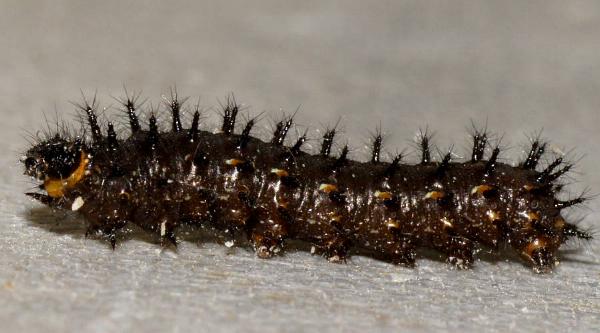
(Photo: copyright of Brett and Marie Smith, at
Ellura Sanctuary,
South Australia)

| Meadow Argus (previously known as Precis villida) NYMPHALINAE, NYMPHALIDAE, PAPILIONOIDEA | (donherbisonevans@yahoo.com) and Stella Crossley |

(Photo: copyright of Brett and Marie Smith, at
Ellura Sanctuary,
South Australia)
The Meadow Argus Caterpillar is black or brown, and spiky. The spikes are short, thick, and branched. There is even a pair on its black head. Small blue-white spots dot the surface, and there are larger whitish marks underneath. There may also be yellow areas at the base of the spikes. There is a narrow yellow neck between the head and thorax.
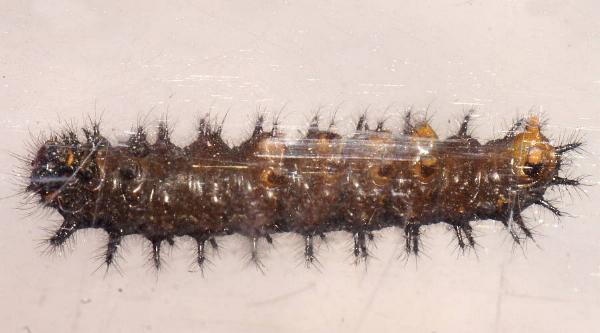
This caterpillar feeds on many plants of the garden and the roadside, both native and introduced, including :
When not feeding, the caterpillar hides under a leaf or at the base of the foodplant. The caterpillar can mature in about two weeks, growing to a length of about 4 cms.
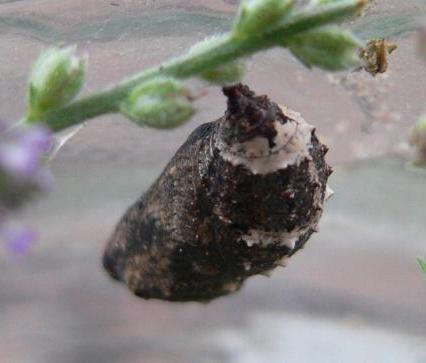
It pupates on the underside of a stem or leaf of its foodplant, dangling by its cremaster to do so. The pupa is dark grey with white mottling. It is rough and has a knobbly dorsal surface. It has the appearance of a dead crumpled leaf as it swings with the plant in the wind. Its length is about 1.5 cms. The pupal period can be ten days, in February in Melbourne, Victoria.
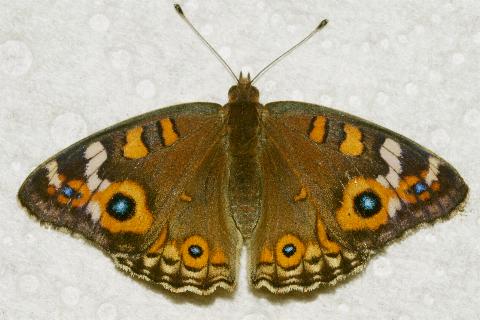
The butterfly emerges after about two weeks. The male and female are similar in appearance. Their wings have upper surfaces that are brown, with orange and white markings, and blue eye spots. The latter are blue spots surrounded by a dark brown ring, which is in turn enclosed by an orange circle. There is a large eye spot at the outer margin of each forewing, and two smaller eye spots on each hindwing. The costa of each forewing also bears a small blue bar bordered on each side by orange.

Underneath, the wings have similar markings to those on their upper surfaces, but against a pale brown background. The butterflies have a wingspan up to 5 cms.
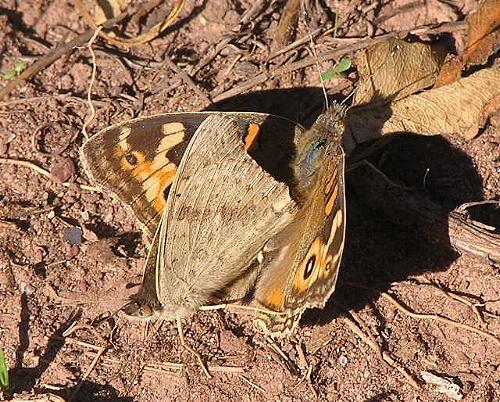
The butterflies are readily attracted to flowers where they are very easy to catch, and are often seen sunning themselves on the ground with their wings open. The butterfly is very hardy. It has been reported to winter in the Flinders Ranges (South Australia) during weather that was below freezing at nighttime.
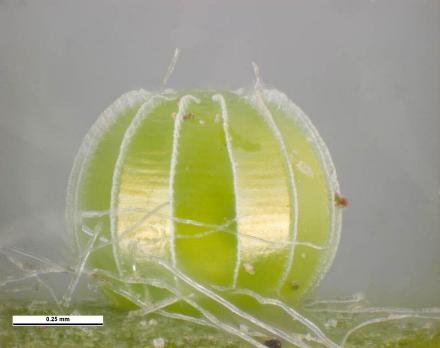
The female lays her eggs singly on the leaf of a foodplant. Eggs laid in captivity hatched in about four days. The eggs are pale yellow or green, and spherical, with a height of about 0.8 mm. They have a dozen or so vertical white ribs separating areas with 30 or so microscopic horizontal undulations.
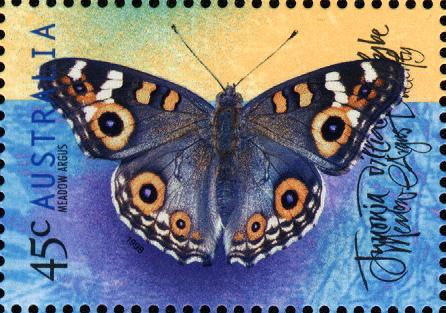
It is widely distributed across the south Pacific, including:
and subspecies calybe Godart, 1819, is found throughout Australia, including
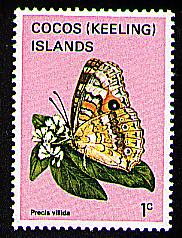 Cocos Islands 1972 | 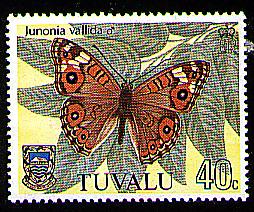 Tuvalu 1981 |  Kiribati, 1994 |
Further reading :
Michael F. Braby,
Butterflies of Australia,
CSIRO Publishing, Melbourne 2000, vol. 2, pp. 574-576.
Johan Christian Fabricius,
Classi VI. Glossata,
Mantisssa Insectorum,
Volume 2 (1787), p. 35, No. 366.
Lois Hughes and Wesley Jenkinson,
Meadow Argus (Junonia villida)(Lepidoptera: Nymphalidae) and,
Life history notes on the Meadow Argus, Junonia villida (Fabricius, 1787) Lepidoptera: Nymphalidae
Butterflies and Other Invertebrates Club,
Metamorphosis Australia,
Issue 77 (June 2015), pp. 1, 4-6, 7-11, 42.
Frank Jordan & Helen Schwencke,
Create More Butterflies : a guide to 48 butterflies and their host-plants
Earthling Enterprises, Brisbane, 2005, pp. 31, 59.
Buck Richardson,
Tropical Queensland Wildlife from Dusk to Dawn Science and Art,
LeapFrogOz, Kuranda, 2015, pp. 228, 229.
Paul Zborowski and Ted Edwards,
A Guide to Australian Moths,
CSIRO Publishing, 2007, p. 2.
 caterpillar |  butterflies |  Lepidoptera |  moths |  caterpillar |
(updated 20 August 2011, 30 December 2025)